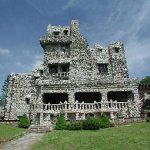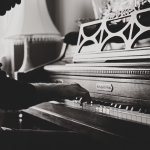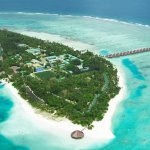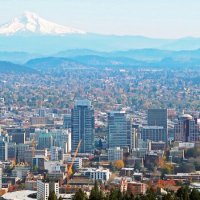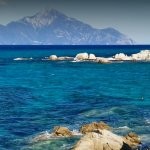The Top 5 Cultural and Historical Sites to Visit in Antigua and Barbuda
Once you are ready to spend your first long holiday or take up your residency in Antigua and Barbuda, exploring the country’s most popular attractions would probably be on top of your to-do list.
However, acclimatizing to your new permanent or long-term temporary home is crucial as well. You have to be familiar with your neighborhood and know where to get your basic needs such as food, grocery items, medicine, and other essentials to avoid or minimize hassles.
Additionally, you have to know the Antigua and Barbuda culture and a bit of their history. By doing so, you can socialize more effectively and get on good terms with the locals, particularly your neighbors and other people that you have to interact with regularly. The likelihood that you will offend them will be lower as well.
Doing so will also help you develop a better appreciation of the culture, traditions, and lifestyle of the locals. This is something that will also help you enjoy your new life or extended stay in this Caribbean country.
Reading about the culture and history of this country once you get your Antigua and Barbuda citizenship allows you to gain an idea of what to expect when you stay here.
However, you can learn more about the country, culture, history, and people, explore your new home, and have fun all at the same time when you arrive in Antigua and Barbuda. You can do this by visiting its best cultural and historical sites first.
Antigua and Barbuda Up Close
Below are the top five cultural and historical places you have to visit in Antigua and Barbuda to learn more about its fascinating customs and traditions:
1. Museum of Antigua and Barbuda
If you want to get an overview of Antigua and Barbuda culture and history in the quickest way possible, start by visiting its most famous museum, the Museum of Antigua and Barbuda.
Located in the nation’s capital city, the museum is housed in the colonial Court House, the oldest building in St. John’s that is still being used today.
The Museum of Antigua and Barbuda displays a variety of Arawak and colonial artifacts. Its numerous features include a life-sized replica of an Arawak house, models of sugar plantations, and a gift shop that showcases local artisan jewelry, pottery, and other products.
The well-stocked museum provides sufficient information on the country’s culture, political past, and geological history, making it the perfect place to learn more about Antigua and Barbuda.
2. St. John’s Cathedral
The Anglican Church is the predominant religious denomination in Antigua and Barbuda. Because of this, there are several cathedrals and chapels across the two islands.
Also known as St. John the Divine and the Cathedral Church of the Diocese of North Eastern Caribbean and Aruba, St. John’s Cathedral is one of the oldest, most beautiful buildings in the country. It is also located on a hilltop, which means you get an amazing panoramic view of the city it overlooks.
It is built of freestone and was often described as a “building within a building” because the interior is encased in pitch pine, since it was intended to be a shelter for the locals during an earthquake or storm.
St. John’s Cathedral has two 70-feet-high identical towers located at the west end. These structures are also topped with cupolas and iron gates which enhance the building’s baroque design.
3. Betty’s Hope
Built and established in 1650, Betty's Hope was the first large-scale sugarcane plantation in Antigua.
It was founded by then-Governor Christopher Keynell and later owned and operated by the Codrington family, whose patriarch, Captain-General of the Leeward Islands Christopher Codrington, named it after his daughter, Betty.
Today, Betty’s Hope is now an open-air museum. Two windmills that were previously used to extract juice from sugarcane were restored and are now the most eye-catching and predominant features on the ground. It also has a cistern complex, a distillery, a boiling house, and the ruins of the old estate house.
The fascinating historical accounts you will find inside the museum, plus the remnants of the plantation and surrounding scenery, make Betty’s Hope one of the most famous and frequently visited landmarks in Antigua and Barbuda.
4. Fort James
Located at the entrance of the harbor of St. John’s overlooking the town, Fort James was built in the 18th century to guard the city against French invaders. It was named after King James II of England.
In the past, the fort was armed with cannons, guns, powder magazines, and barracks.
Today, the fort still has several cannons, a powder magazine, and remnants of the old buildings and foundation walls. As such, it is still a great place to get a glimpse of the past and how Antigua and Barbuda prepared itself from possible invaders.
Additionally, Fort James has excellent views of the bay. There is a nearby beach as well, which means you can go for a swim or simply explore the area.
5. Dow’s Hill Interpretation Centre
Finally, for a quick yet informative primer on Antigua and Barbuda’s history and culture, visit Dow’s Hill Interpretation Centre.
The center, which is located in Dow’s Hill, gives visitors a well-crafted, interesting, and educational presentation of the history and culture of Antigua and Barbuda.
The 15-minute production covers six crucial ages that shaped the country. It includes details about the British colonization, the natives’ struggle against slavery, and its natural riches.
The presentation and additional placards around the center can give you captivating insights into the Antiguan way of life.
As a bonus, the Dow’s Hill Interpretation Centre is located in Shirley Heights, another historical and beautiful site in Antigua. You can get amazing views of the natural scenery surrounding the area atop the center. You can also visit other popular attractions such as The Lookout and The Ridge.
Aside from packing your essential summer and beach clothes, read about the history and culture of Antigua and Barbuda to better prepare for your trip.
But if you don’t have any time to do this, visiting the right places upon your arrival here can help you gain a good idea and understand the culture and heritage of this beautiful and fascinating country.
AUTHOR BIO
Abire Mansoor is a Director and Licensed Agent at Citizens International, a white-glove specialist firm offering private client services necessary for citizenship, residency and investment into the Caribbean, North America, and Europe. Based in her home country of Antigua & Barbuda, she is an experienced consultant who works directly with many professional partners and advises clients worldwide.
More to Read:
Previous Posts:
